How to Make Tea: A Complete Guide
This post may contain affiliate links. As an Amazon Associate, I earn from qualifying purchases. Please read my disclosure.Learning how to make tea is simple but there are definitely some steps to keep in mind for the perfect cup of tea every single time. It’s all in the details, and once you learn how to make perfect tea, you’ll be rewarded with the best cup every single time.
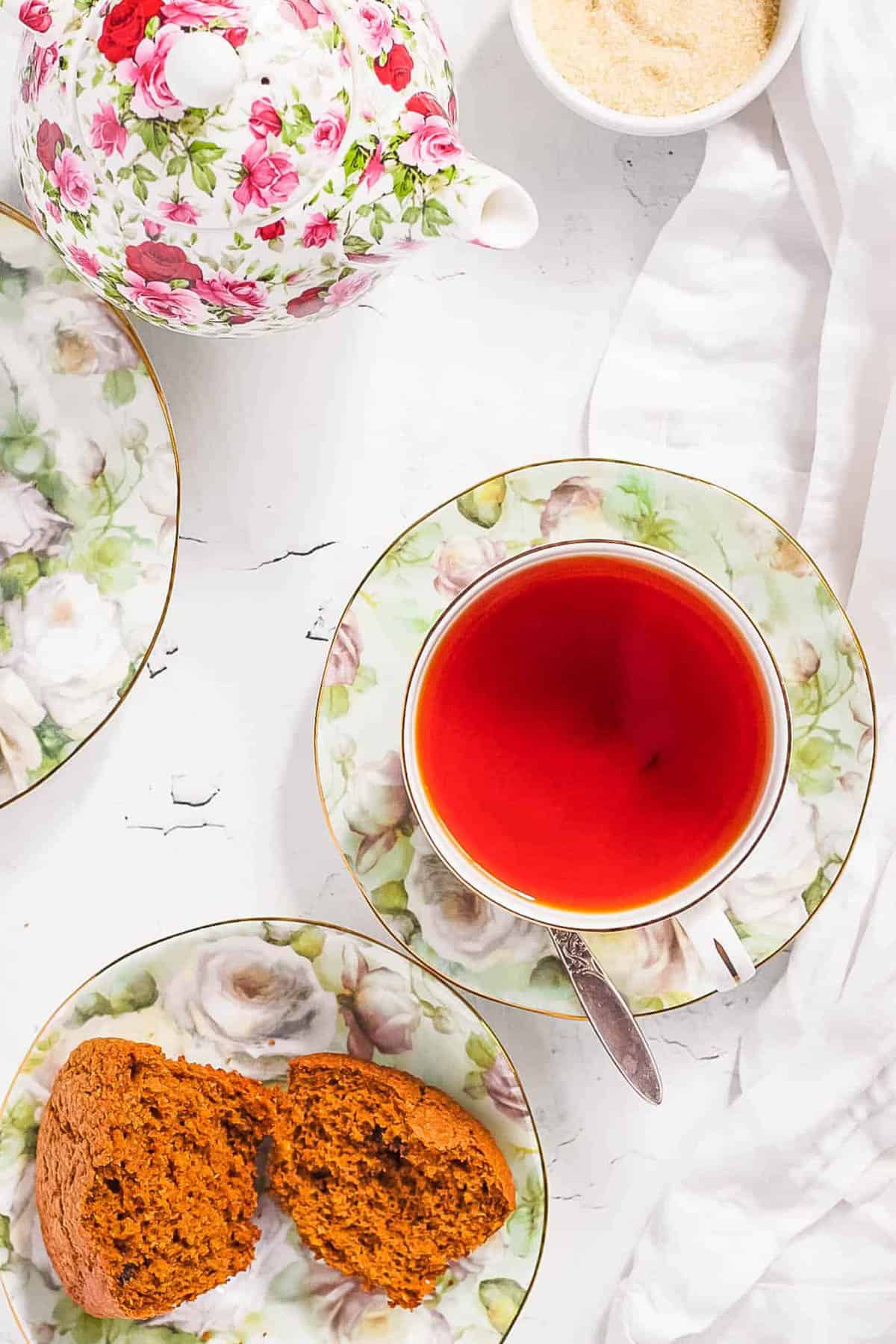
This guide will share everything you need to know about tea, including the three most important things to consider when making tea. By the end of it, you’ll know exactly how to make homemade tea with the best flavor ever.
While there are many different ways to make tea, tea connoisseurs know that you have to always keep a few things in mind for the best cup. Making tea is art, and once you’ve honed your skills, everyone who tries it will keep asking how you made it.
If you’ve ever ended up with a bitter cup of tea, or just didn’t know which type of tea to use or what how long to steep it, this guide is perfect for you. I’ll walk you through everything you need to know to learn how to brew tea perfectly.
Video: How To Make Tea (Black or Green Tea!)
The History Of Brewing Tea
The art of brewing (and enjoying) tea has a rich and long history going back ages.
Having its start around the southern border of China anywhere from 3000-5000 years ago, tea has been the beverage of choice for a huge portion of the globe up into the present day!
But where do new and curious tea drinkers begin? Luckily, those centuries of cultural development and exchange have led to pretty simple and easy ways to brew tea!
Whether you like your tea green, black, white, or Oolong (more on these a bit later), this guide will help you get started and will help you perfect your own pot of delicious tea.
Different Types Of Tea
There are many different types of tea out there! There are actually two main families of tea – ‘true teas’ and ‘herbal teas’. Let’s look at both in more details and discuss the different varieties that come under each:
True Teas
First, there are “true teas” which come from the camellia sinensis plant. These teas are the descendants of the same ones enjoyed in China and elsewhere in Asia for centuries. These teas are naturally caffeinated.
True teas include green, white, Oolong, black, yellow, pu’erh and fermented teas. The second main family includes herbal teas.
The main difference between true teas and herbal teas is how long the leaves were allowed to sit and soak up oxygen before they were exposed to a heat source.
This is called oxidization and it leads to the leaves having different flavors, aromas, and colors. Other factors come into play too but oxidization is a big one.
Each of these teas has a different flavor, aroma, mouthfeel, and caffeine catalog. They are also brewed slightly differently.
Green Tea
The second least oxidized of the true teas. Green teas are usually brewed at 150-185 degrees Fahrenheit though lighter greens may require a lower temperature. They can steep for about 3 minutes before they get too bitter.
Green tea leaves are generally a deep yellow to a dark alpine color range, they have a grassy and vegetal flavor and aroma palette, and possess a moderate caffeine level compared to other true teas. Green tea is known for its health benefits, as it’s packed with inflammation-reducing antioxidants and polyphenols.
White Tea
The least oxidized of the teas. 140-185 degrees is ideal for white tea. Though often delicate, some whites can be surprisingly robust, even providing more caffeine than the formidable black tea at times!
More often than not they provide similar or slightly lower caffeine levels, floral, fruity, and exotic flavors and aromas, charming yellow colors, and a steeping time of 2 minutes or so.
Yellow Tea
A considerably rarer tea, yellow teas can be found in China and Korea and are very similar to green teas, though they are allowed to oxidize just a bit longer.
They follow the same steeping and brewing steps as green but can offer up a bit of a different color, flavor, and aroma palette from a typical green tea, too. Their caffeine levels are similar to green tea if not a bit higher.
Oolong Tea
The next most oxidized tea after green and yellow tea is oolong. This tea can be brewed at 195-200 degrees Fahrenheit and steeped for 3-5 minutes.
These type of teas range from pale yellow to a deeper amber color. Their flavor palette is diverse, some are malty and akin to a breadlike flavor, while others are fruity and floral. Their caffeine level is similar to green tea.
Black Tea
One of the most popular teas in the world, black teas are robust in just about everything. Black teas are some of the most oxidized teas and have a complex flavor. They require 200 degrees for brewing and a steep time of 3-5 minutes.
Black tea has the most caffeine of any of the true teas, and a color that tends to be a reddish-brown to a deep, dark, brown. The flavor and aroma can be malty, savory, earthy, and robust.
Pu’erh (or pu-erh) And Fermented Tea
Pu’erh and other fermented teas are often sold in large bricks or balls of tea that must be chipped apart to be brewed. They are more oxidized than black tea and possess a real novel catalog of flavors and aromas. Their brewing and steeping is around temperatures of about 200-210 degrees Fahrenheit and a steep time of 3 to 5 minutes.
These teas can be malty, savory, earthy, musty, fruity, sweet, and even grassy. Their colors can range from dark brown to an almost maroon color.
Pu’erh has the distinction of offering a different flavor and aroma after each steeping so make sure to rebrew your pu’erh a few times! Their caffeine levels are similar to black tea and some report a kind of light and airy feeling when they drink a lot of pu’erh in a sitting!
Herbal Teas And Tisanes
So where does this leave teas like mint tea, rooibos, chamomile, and the like? They are grouped together as herbal teas or herbal blends.
An alternative name for them are the tisanes. They include teas made from any ingredients or a blend of herbs not immediately from the true tea family.
However, many herbal tea blends may use true tea leaves along with other choice ingredients like lemon, cinnamon, ginger, and flowers. These teas do not possess caffeine unless they are found in a blend with a true tea.
Their brewing temperatures usually range around 190-200 degrees and their steeping times can clock in anywhere from 3-5 minutes in length. Their subtle flavors and aroma palettes will all be different depending on what their ingredients include!
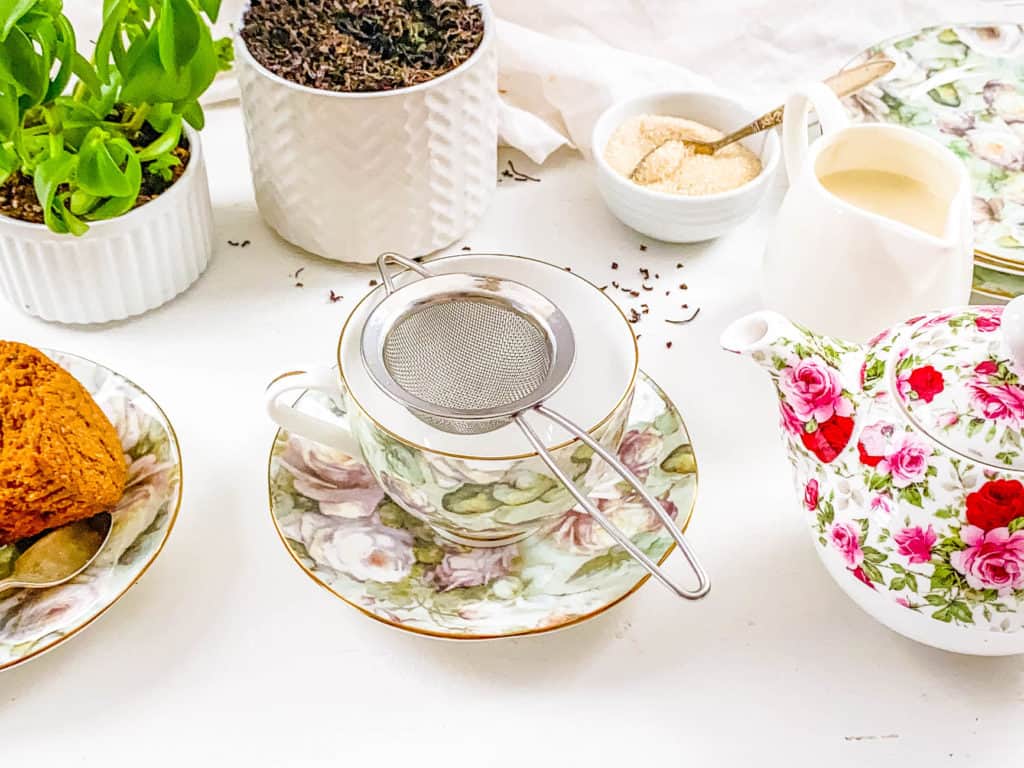
Three Most Important Aspects of Making Tea
Here are some general guidelines to keep in mind when making a good pot of tea:
Type Of Tea
Which type of tea are you going to make? As we discussed above, that matters.
For example, green tea leaves steep more slowly and don’t require as long of a steeping time. That’s why you can steep them at a lower temperature. This is especially when compared to black tea leaves.
Herbal teas, on the other hand, steep for far longer than real teas without turning bitter or astringent since they do not include the Camellia sinensis tea plant.
Herbal teas, on the other hand, don’t come from the Camellia sinensis tea plant, so they can steep for a lot longer than true teas without getting sour or bitter.
Water Temperature
Depending on the type of tea, the recommended brewing temperature range is 160 to 212 degrees.
If you don’t have an electric kettle with a temperature control, keep in mind that water simmers at 190 degrees and boils at 212 degrees at sea level. So you can get a good idea of how hot the water is by looking at the bubbles.
But keep in mind that the boiling point drops by about one degree for every 100 feet of elevation. This means that if you are far from sea level, you may need to make changes.
Steeping Time
When making your own tea, if you don’t steep your tea long enough, it might be weak and watery. Oversteeping your tea can result in an overly bitter and astringent taste.
First, taste your tea after the minimum amount of time that is suggested. Then, decide if you’d like it to steep a little longer.
Also, keep in mind that the kind of tea you choose determines how long you need to brew it.
A good rule of thumb is to brew black teas for 4-5 minutes and to keep in mind that herbal infusions require longer brewing times. This is the best way to ensure your tea brews properly.
How To Boil Water Properly To Make Tea
If you’ve decided on the tea variety you want to have, and have determined the ideal steeping temperature and duration, then the next step is to figure out how you will boil your water.
Fortunately, there are lots of ways to boil the clean, fresh water. These are a few of the most popular:
Electric Tea Kettle
This countertop gadget is great because it doesn’t need a burner and turns off on its own when the water reaches a boil, which usually happens quite quickly.
Certain electric kettles come equipped with integrated temperature control settings, allowing you to precisely choose the temperature you want to achieve according to the tea you’re steeping.
Stovetop Tea Kettle
This traditional tea kettle is heated by placing it on top of a stove burner and usually has a whistle to let you know when the water is boiling.
Saucepan
If you don’t have an electric or stovetop kettle, don’t worry. It’s absolutely okay to just boil water in a saucepan on the stovetop in order to make hot water for your tea.
Microwave
Now you may be considering heating the water in your microwave, but that’s not a method I’d recommend.
Unfortunately, there is no reliable way to bring water to a boil in a microwave since the heat output of different models varies, and water is not heated evenly in them. So. even if bubbles appear after a minute or so, this does not indicate that the water has reached a full boil.
Plus, it’s easy to overheat water in a microwave because it’s impossible to determine the boiling point there. When water is heated beyond its boiling point, it loses a lot of oxygen and can make any contaminants in the water taste even worse.
Also, it can burn the tea leaves you’re steeping, making the tea too bitter.
Different Types Of Tea Packaging
Loose Leaf
Tea in its purest form is loose leaf tea. Tea leaves are allowed to expand and unfold when they contact with hot water in a steeping device that allows them to do so, such as a teapot or a spacious strainer that sits in a teacup.
As a result, the brewed tea retains all of the subtle flavor characteristics that its grower and producer intended.
Typically, one serving of loose-leaf tea is weighed out as follows: two grams of loose tea leaves, or approximately a teaspoon, for every eight ounces of hot water, or about the size of a common tea mug.
To brew multiple cups of tea in a big teapot, simply increase the amount of loose leaf tea to match the total ounces of water used. Most loose leaf tea can be boiled more than once, so the same amount of tea can make more than one cup of tea.
Pyramid Tea Bag
The purpose of pyramid tea bags is to provide the convenience of a tea bag with the taste of loose leaf tea. With these pre-measured tea bags, you don’t have to guess how much loose leaf tea to use.
The tall, spacious bags are designed to fit within a single teacup and allow ample room for tea leaves to spread out and interact with the hot water to fully extract flavor.
You can steep these whole leaf teas many times to produce multiple cups of tea from a single pyramid tea bag.
Square Paper Tea Bag
Paper tea bags are packed full of finely chopped tea leaves for maximum convenience and robust flavor.
The finely chopped tea and paper bag allow water to readily flow into the bag and infuse the tea leaves, resulting in a fuller-bodied and often stronger tea bag brew than a pyramid tea bag brew.
Usually, a square tea bag is steeped only once.
Traditional Tea Bag
These are the standard tea bags that you most likely saw everywhere growing up.
They’re usually square and have a tag and string on them. Inside, they’re usually filled with torn low-quality tea leaves and tea dust which is why tea bag teas don’t taste as good, especially when compared to loose leaf teas.
Initially, their purpose was to facilitate the mass production of a low-cost, unidimensionally potent tea that could withstand the addition of milk and sweetener.
Commercial tea bags are usually brewed only once.
What You Need To Make A Proper Cup of Tea
Getting the best tea experience is all about what you use to make your tea and how you go about making it. Let’s look at what you’ll need to make tea.
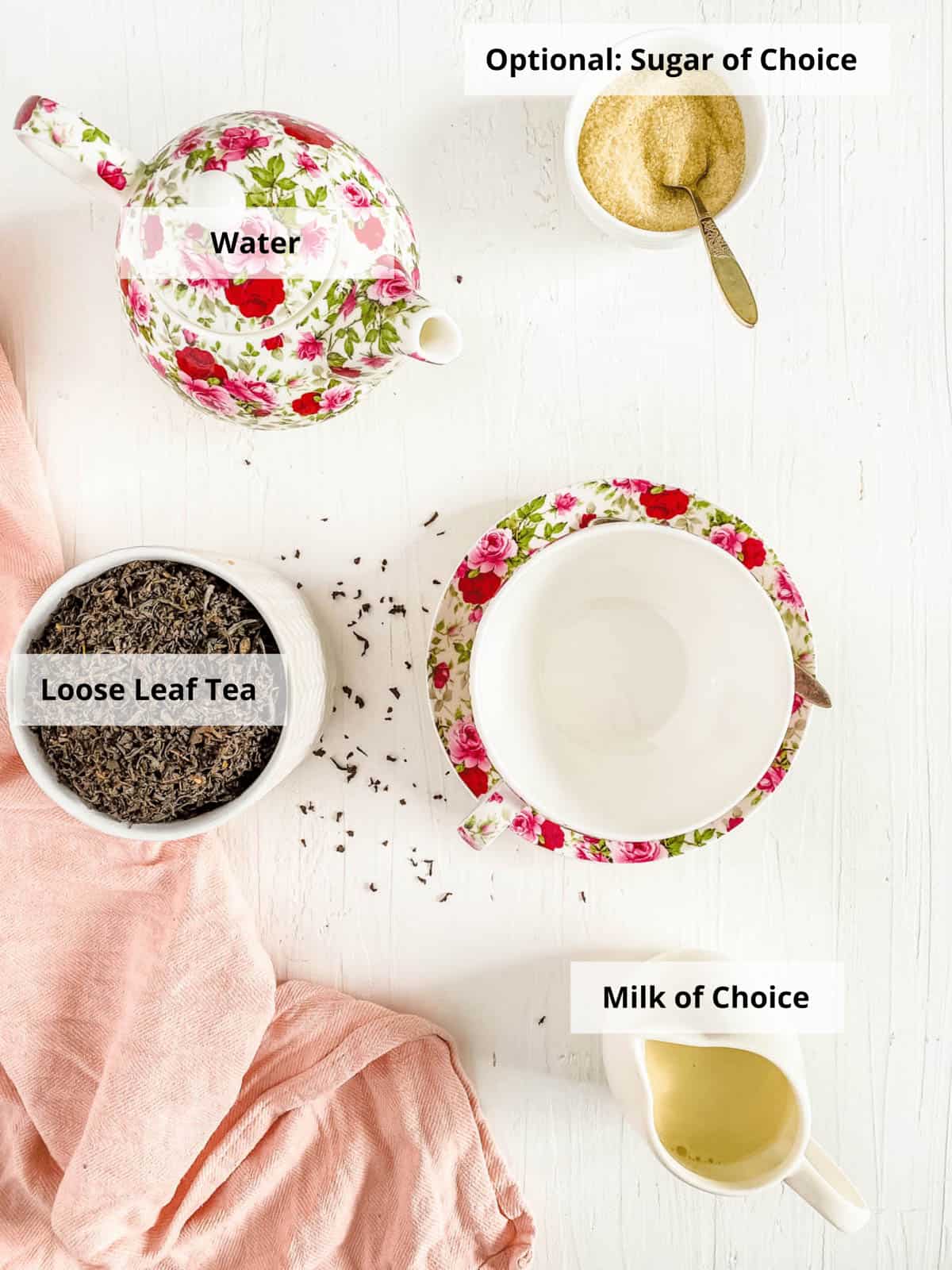
- Loose Tea: Tea bags or tea sachets are never my first choice when it comes to tea and water. Instead, I always go for loose tea.
- Filtered Water: The next most important factor when brewing an incredible pot of tea would be the water quality. After all, tea is mostly water. I do not suggest using tap water but rather filtered, spring water, or purified water instead. This really does have an impact on the taste of your tea by giving it a rich and smooth taste that allows the leaves to shine.
- Milk And/Or Sugar: This is completely optional and all about personal preference. You can use regular whole milk or plant-based milk like almond milk or oat milk for your tea. Any type of sweetener works as well, including regular white sugar, brown sugar, simple syrup, stevia extract, etc. Pick your favorite according to personal taste or skip it entirely.
- Teapot: The teapot you choose can depend on your tea leaves. Some leaves work really well with certain pot types. For a standard ceramic pot, green and white tea should be fine. But black tea, which needs to be kept hotter for longer may need something a bit more robust, so consider using a thicker material for black tea. Alternatively, you can also use a teapot with a built-in large infuser to make things even easier.
- Strainer: You’ll also need a strainer if you plan to make loose leaf tea – I prefer a stainless steel strainer since it won’t change the flavor of the tea at all.
- Electric Kettle: I highly recommend an electric kettle with temperature setting; it’s something every tea lover should consider having. It will help streamline the brewing process. While an electric kettle works great, you can also use a regular kettle and brew tea on the stove, using a thermometer to achieve the optimal water temperature for the type of tea you are brewing.
How To Brew The Perfect Cup Of Tea With Loose Leaf Tea
I mentioned the different tea varieties are nuanced. So to keep it simple I am going to give a guide to brewing green tea, which is similar to how to brew black tea.
Why green?
It is one of the most common, iconic, and delicate of teas around. The brewing method is quite standard and can be applied with other types of teas including black, or herbal teas and tisanes.
Measure Your Tea: The amount of tea you need depends on how much water you use. I recommend one teaspoon of loose leaf tea or one tea bag per one cup of water you plan on using to brew. More tea per water will lead to a stronger brew, while more water per tea will lead to a milder one. Add leaves to your tea infuser or tea ball and then place your teapot.
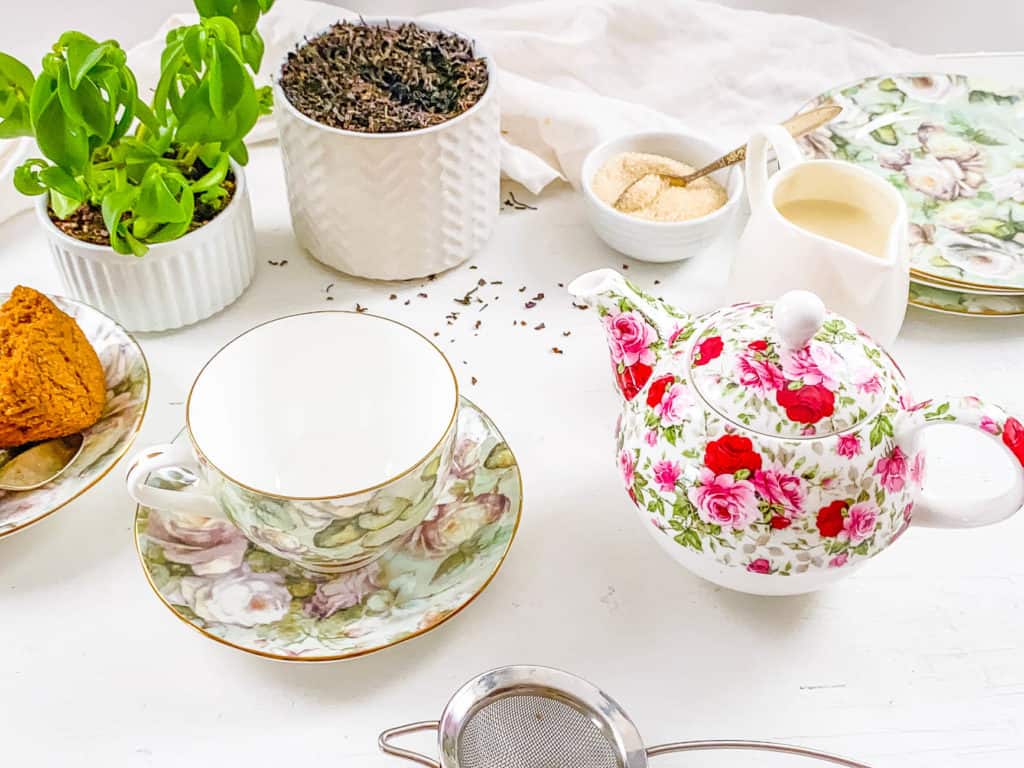
Boil The Water: You’ll want to start with fresh cold water, and allow it to heat in the kettle (vs. starting with warm or hot water from the tap). Once your kettle has boiled, wait for about a minute to two minutes for it to cool a bit so it does not scorch your leaves but not too long that it isn’t hot enough to brew the leaves! Your thermometer will come in handy here.
Follow these guidelines for the ideal temperature depending on the leaves you are using for the best results.
- 140-180 degrees Fahrenheit for Green and White tea leaves.
- 190-195 degrees Fahrenheit for Oolong teas.
- 200 degrees Fahrenheit for Black tea.
- 210 degrees Fahrenheit for Pu’erh, Herbal teas, and Tisanes.
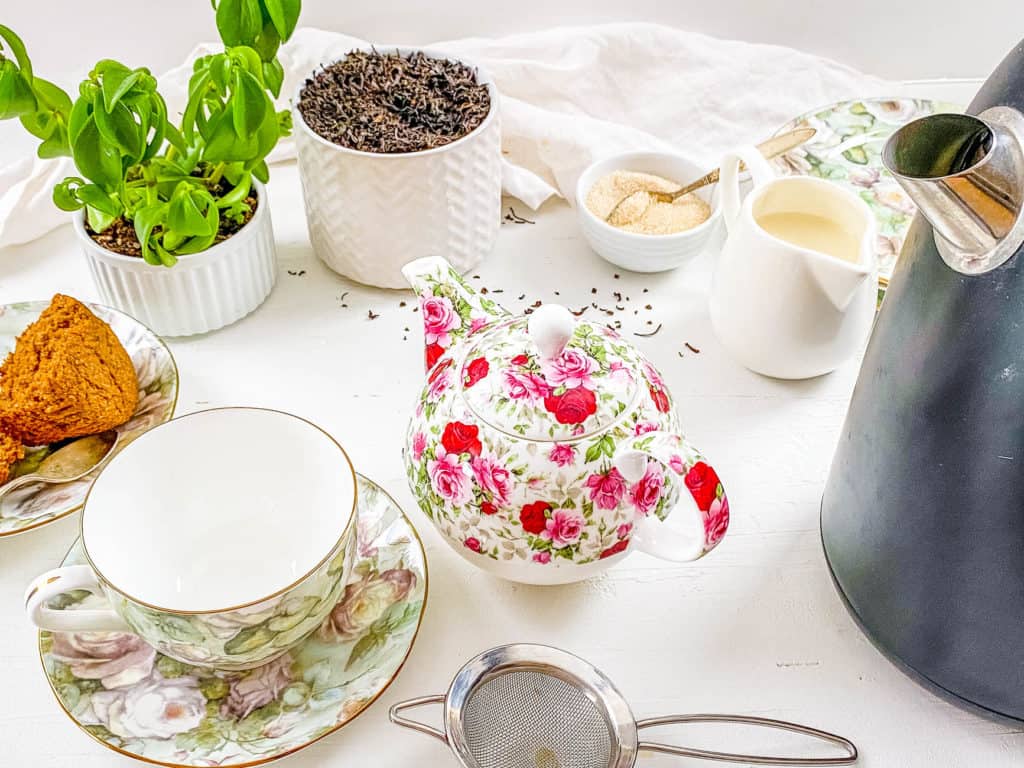
Warm Up The Teapot: Almost no one does this little thing that makes your tea taste even better. They should, though. Fill up half of the teapot with some of the hot water. Stir it around a few times, then pour out the water. We are preheating the teapot in order to prevent an excessive decrease in temperature when the hot water for tea is added.
Steep Your Tea: Now, pour your water onto the leaves in your pot. Tea steeps for anywhere from 2-7 minutes depending on the type of tea you are using. If you like a stronger tea flavor, let your leaves steep a little longer than these guidelines. But remember, steep too long and you may end up with a bitter taste! Your timer will come in handy here. Look below at the recommended brew time below.
- 3 minutes for it to steep for Green
- 2 minutes for White and Oolong.
- 3-5 for Black and Pu’erh.
- 5-7 minutes for Herbal teas and Tisanes.
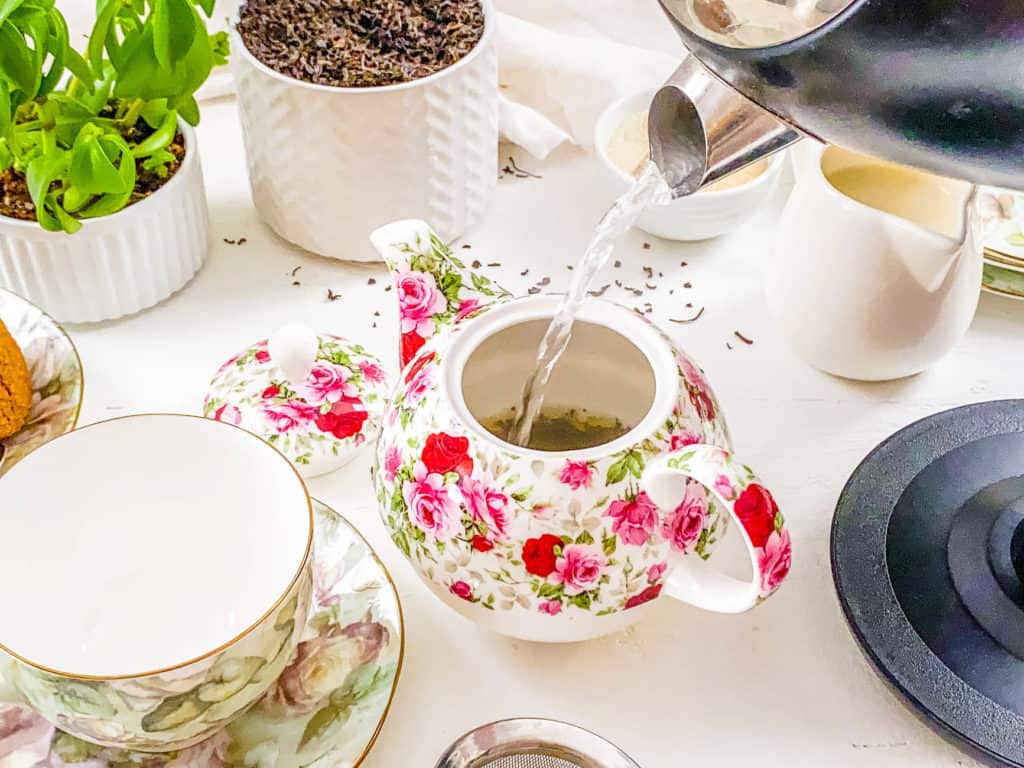
Stain Tea Solids: Pour your tea into your chosen tea cup using a tea strainer if you did not use a tea infuser. Let it sit for a bit so it can unfurl its fine aroma and the full catalog of flavors. Sip your tea and enjoy! Optional: add sugar and milk for a sweet tea.
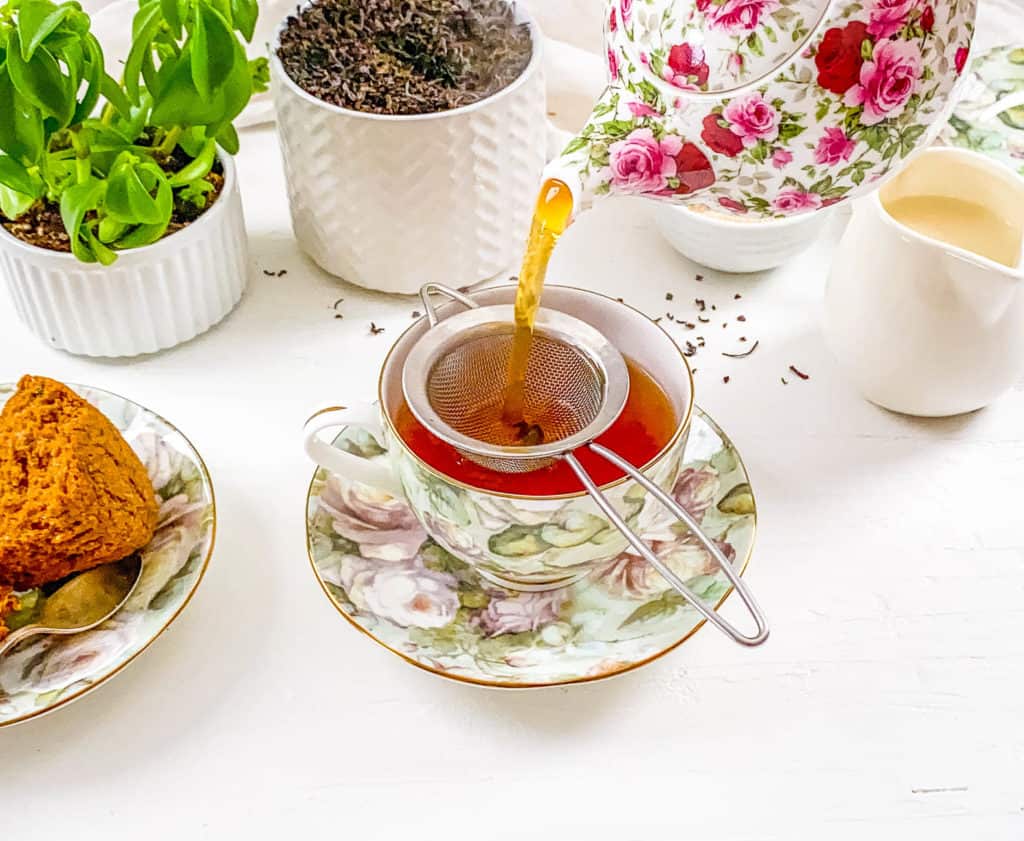
I encourage you to experiment while brewing until you find the perfect brew for your personal taste. Happy brewing!
How To Make Tea Using A Tea Bag
This is by far, the easiest way to make tea at home! Here’s how:
- Step 1: Put a tea bag in your mug.
- Step 2: Bring cold water to a full boil. Then pour the boiled water on the tea bag and steep according to the directions above based on which type of tea you have chosen.
- Step 3: Once the steeping time is over, squeeze the tea bag into the cup, releasing any liquid the tea bag has absorbed. Then, remove the tea bag from the cup.
- Step 4: Add your choice of milk and sugar (coconut sugar, honey, cane sugar, stevia, agave, etc.) if you like, then drink and enjoy!
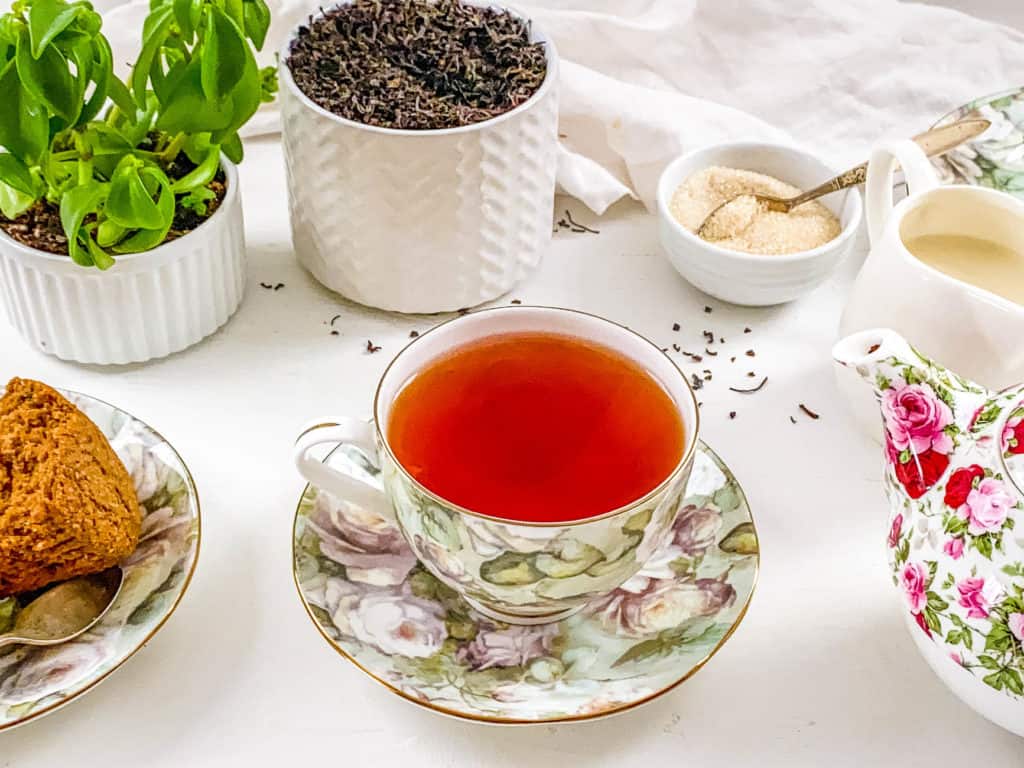
How To Make Iced Tea
These instructions are for making iced tea for one, but you can scale this recipe to make it for a crowd as well. As a general rule, use a tea to water ratio of: 1 tea bag (or 1 serving of loose leaf tea) to 8 ounces of water per person.
Making iced tea is actually just as easy as making hot tea, you just have one extra step at the end to chill the tea. Here is how you make iced tea using a tea bag.
- Step 1: Put a tea bag in a mug or large glass container (if making for a crowd).
- Step 2: Bring water to a rolling boil, then pour over the tea bag and steep tea according to the directions above.
- Step 3: Once the steeping time is over, remove the tea bag (or bags).
- Step 4: Add sugar (coconut sugar, honey, cane sugar, stevia, agave, etc.) if desired.
- Step 5: Add a few ice cubes to the mug or glass container, or place the mug/container in the fridge to allow it to chill before serving.
How To Make Cold Brew Tea
In order to make cold brew tea, you’ll need a french press! But this can be a convenient way to make tea if you don’t have a way to boil water.
To make 1 serving of cold brew tea:
- Step 1: Add 1 serving of loose leaf tea + 1 cup of cold water into a French Press. Make sure the plunger is up.
- Step 2: Refrigerate for 8 hours (at a minimum, you’ll need to steep for 4 hours, but really, overnight is best!)
- Step 3: Take the french press out of the refrigerator, press the plunger down, and pour the tea over ice. Add sugar or your favorite sweetener if desired.
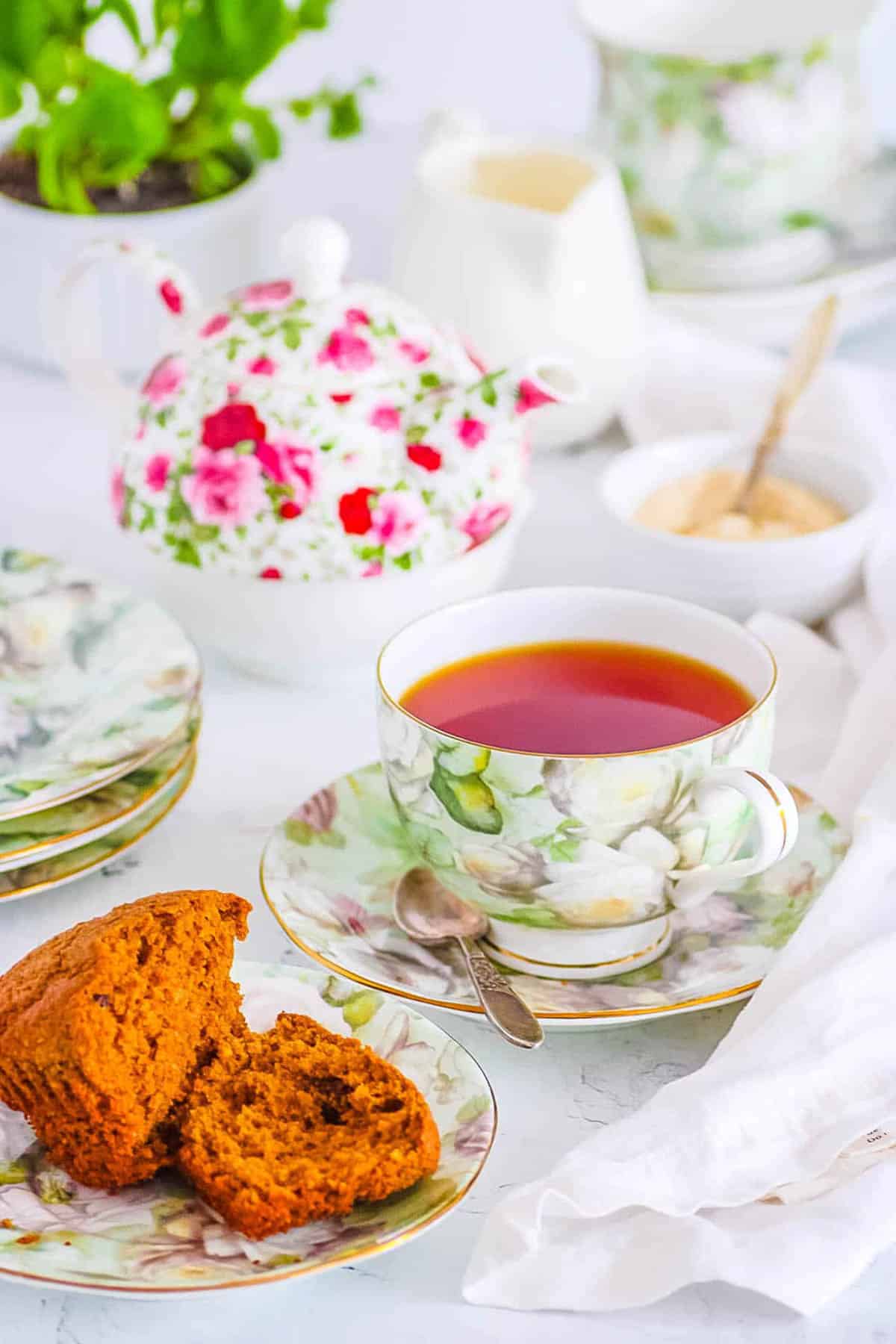
Tips And General Guidelines
- Prevent Bitterness: After the recommended steeping time, avoid leaving tea leaves in water to prevent bitterness. Use a tea infuser in your teapot to separate leaves from water, or pour it out through a strainer to prevent it from steeping for too long.
- Choose Filtered Water: While you may be tempted to use cold tap water, always opt for clean, filtered water to ensure it doesn’t impart any unwanted taste to your tea. You’ll end up with a better cup of tea as a result.
- Control Water Temperature: Different teas require different water temperatures. Some need boiling water, while others, like green tea, are sensitive. Ensure the water temperature matches the tea type.
- Time Your Steeping: Another top tip is to use a timer (like your smartphone) to avoid over-steeping, which results in bitterness. Don’t let your tea steep for a long time past the recommended time.
- Go For Loose Tea: Choose loose tea over tea bags for better quality. Tea bags often contain leftover broken bits, known as “tea dust,” while loose tea consists of whole, rolled tea leaves that unfurl during steeping.
Frequently Asked Questions
Tea contains compounds called tannins. A lot of tannins are released when tea leaves steep in boiling water or for an extended period of time, which results in bitter tea. So, avoid steeping your tea in water that is extremely hot or for a long period of time.
Green tea is known for being quite fickle. Not only is boiling hot water unnecessary, but you shouldn’t steep for too long either. If you’ve ever tasted unpalatable green tea, it wasn’t prepared correctly.
Once more, tannins are to blame. If you infuse your tea for an insufficient amount of time or use water that is too cold, the resulting cup of tea will be subpar.
Higher quality, clean water will make your tea taste cleaner and more consistent.
More Drink Recipes And Tips!
- 12 Best Gifts for Coffee Snobs
- Healthy Hot Chocolate
- Lavender Latte
- Biscoff Latte
- Starbucks Dragon Drink
Love this plant based breakfast recipe? Please leave a 5-star rating 🌟 in the recipe below and/or a review in the comments section further down the page!
You can also FOLLOW ME on FACEBOOK, INSTAGRAM, and PINTEREST to see more delicious, healthy, family-friendly food, and if you have any questions, I’m here to help!
Printable Tea Recipe Card
🎥 Watch How to Make It
How To Make Tea
Ingredients
- 1½ tsp Loose Leaf Green Tea or Black Tea
- 8 oz purified water
Instructions
- Measure out your tea. One teaspoon of loose leaf tea or one teabag per cup of water you plan on using to brew. More tea per water will lead to a stronger brew, while more water per tea will lead to a milder one. Add your tea to your teapot.
- Heat your water in your kettle. Once your kettle has boiled wait for about a minute to two minutes for it to cool a bit so it does not scorch your leaves but not too long that it isn't hot enough to brew the leaves! Your thermometer will come in handy here. For green tea the temperature should be between 140-180 degrees Fahrenheit. See the notes for the recommended temperature for other types of tea.
- Pour the water onto the leaves in your teapot and allow to steep. For green tea steep for 3 minutes. If you like a stronger tea flavor, let your leaves steep a little longer than the recommended guidelines. But remember, steep too long and they may become bitter! See the notes section for the recommended time to steep your leaves for the different types of teas.
- Pour your tea into your chosen cup. Let it sit for a bit so it can unfurl its fine aroma and the full catalog of flavors. Sip your tea and enjoy!
Notes
- 140-180 degrees Fahrenheit for Green and White tea leaves.
- 190-195 degrees Fahrenheit for Oolong tea.
- 200 degrees Fahrenheit for Black tea.
- 210 degrees Fahrenheit for Pu’erh, Herbal teas, and tisanes.
- 3 minutes for Green tea
- 2 minutes for White and Oolong
- 3-5 for Black and Pu’erh
- 5-7 minutes for Herbal teas and tisanes
Nutrition
Sources
- Editors, Epicurious. “How to Brew a Perfect Pot of Tea, Every Time.” Epicurious, Epicurious, 9 June 2017, https://www.epicurious.com/expert-advice/how-to-brew-tea-perfectly-article.
- Taste.com.au. “How to Brew the Perfect Pot of Tea.” Www.taste.com.au, 4 Aug. 2010, https://www.taste.com.au/entertaining/articles/how-to-brew-the-perfect-pot-of-tea/jl5ctv6z.
- Taste.com.au. “How to Brew the Perfect Pot of Tea.” Www.taste.com.au, 4 Aug. 2010, https://www.taste.com.au/entertaining/articles/how-to-brew-the-perfect-pot-of-tea/jl5ctv6z.




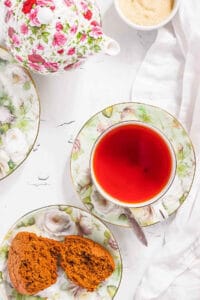
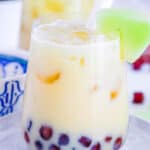
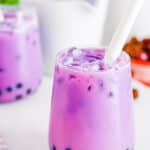
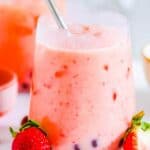

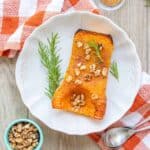
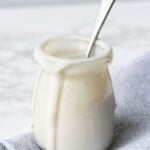
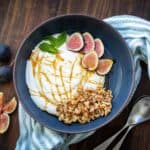
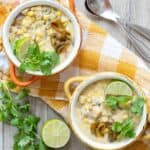
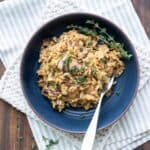
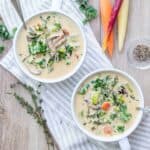
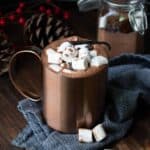
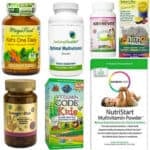
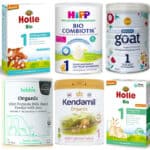
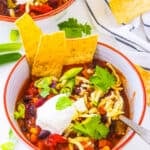
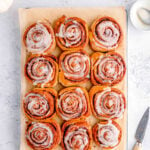
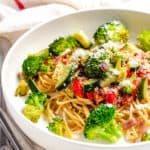
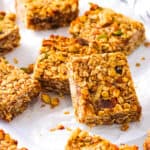



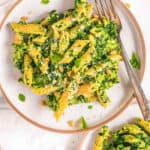
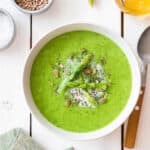

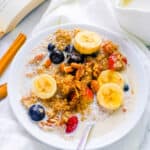
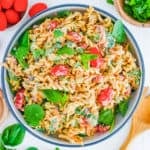
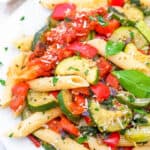


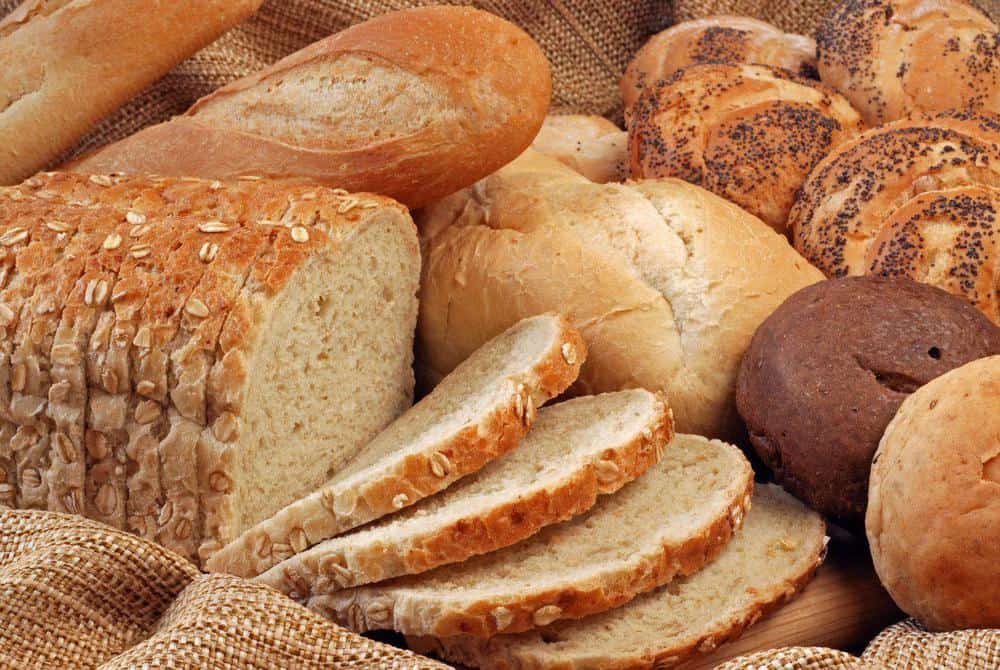
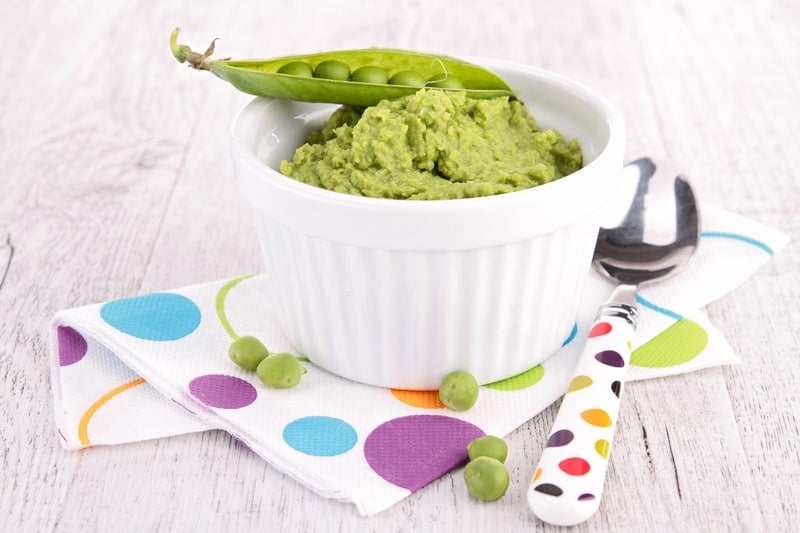
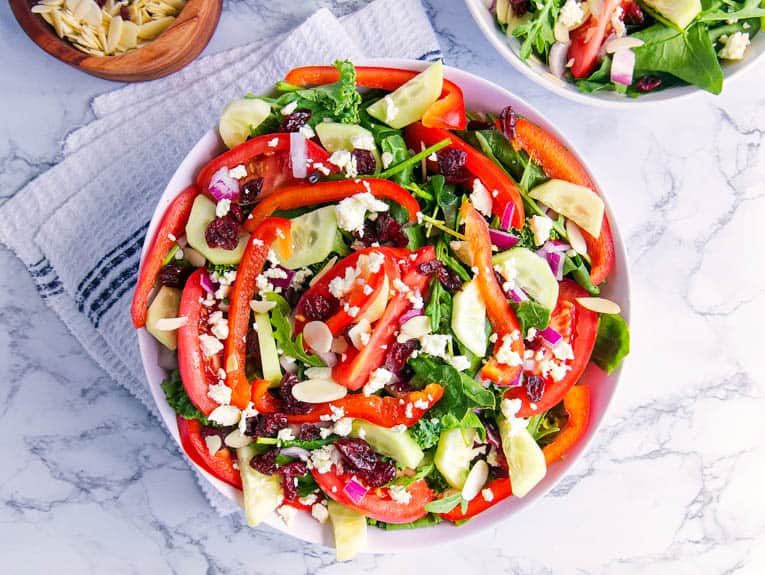


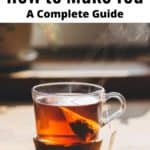
My go to tea is English Breakfast with cream and sugar, very traditional. Looking forward to trying other flavors and types. Thanks!
Love English Breakfast tea – a total classic! 🙂
What a great guide to tea. I love that there is just so much choice.
Thanks Dannii!
I love hot tea in the evening, no matter the time of year. Such a helpful guide, thank you! Also, I’m obsessed with your tea pot in the pictures. Where did you get it?
So glad you found this helpful! And I’m so glad you liked my tea pot! It was actually a gift from a friend of mine in Australia!
This guide covers everything you need to know about making tea, from the different types of tea to the perfect brewing techniques. It’s a must-have for tea lovers!
Thanks Gianne!
This was such a helpful guide to making tea!! Definitely bookmarking this and referencing this every time I want to make the perfect cup of tea!
Thanks Alison! So glad you found it helpful!
I was just gifted some loose tea from a local shop. I can’t wait to explore the different flavors. Thank you for the tutorial.
No problem at all!! Hope you have fun trying all of the new teas you received! 🙂
Very helpful guide! Thank you! I’ll keep coming back to this post!
So great to hear! Thanks Tavo!
This is such a handy guide! I had no idea that so much goes into brewing the perfect cup of tea. 🙂
Thanks so much Carrie! So glad it was helpful!
These are some great tips and tricks to make your own tea! I usually use prepackaged tea bags but am excited to give this a try!
Thanks Sara! I used to only use prepackaged tea bags too, but you’ll be surprised how easy it is to make loose leaf tea too!
This is absolutely delicious! I love that it’s such a crowd pleaser for the whole family
Thanks Shadi!!